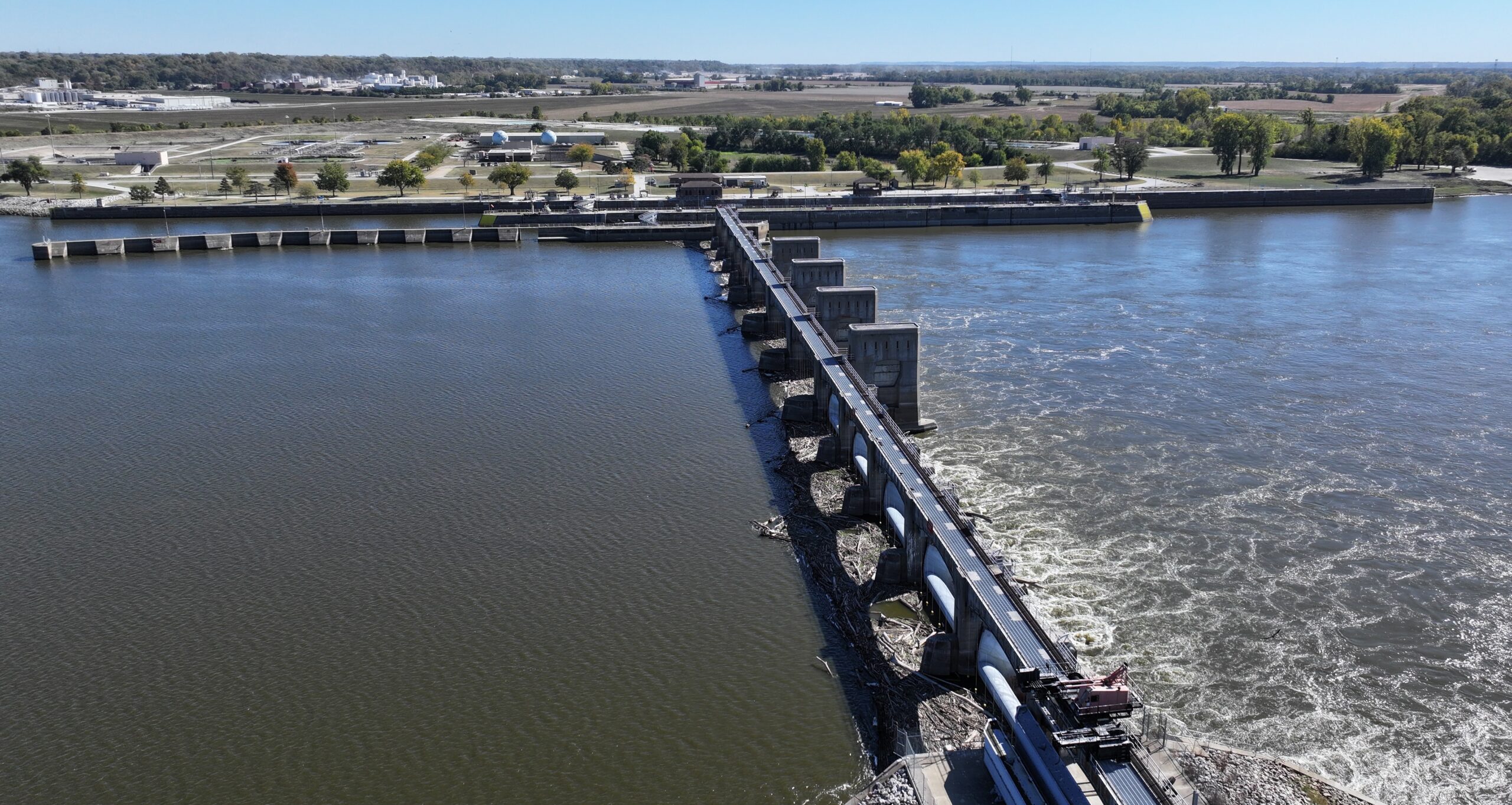Ohio developer files application for permit to build hydroelectric plant at Lock and Dam No. 21

QUINCY — A developer from Ohio recently filed an application with the Federal Energy Regulatory Commission (FERC) for a preliminary permit for a hydroelectric plant along the Mississippi River at Lock and Dam No. 21 in Quincy.
Alan Skelly of Low Head Hydro M 11 LLC from Mount Orab, Ohio, filed the application on May 29 to study the feasibility of the proposed Mississippi Lock and Dam 21 Hydroelectric Project. A preliminary permit, if issued, grants the permit holder priority to file a license application during the permit term. A preliminary permit does not authorize the permit holder to perform any land-disturbing activities or otherwise enter upon lands or waters owned by others without the owners’ express permission.
Skelly says he expects to hear a decision from the FERC by February. He called the time it would take to complete construction of the plant a “long and arduous process.”
“It will take about three years just to get this thing fully licensed and ready to be built, and then it will take us about another year and a half to build it,” Skelly said. “We’re talking four to five years out, a long, long process with the FERC. But it’s a great thing. It’s bringing renewable energy, clean energy to the area, and it’s something we look forward to working on.”
Hydropower could attract large firm to do AI processing
The proposed project would have an estimated annual generation of 71 gigawatt‑hours. (One gigawatt equals 1,000 megawatts.) Skelly said that’s enough to power about 7,000 homes or a big factory. However, he said the hydroelectric power produced is expected to help attract a large computer-based firm that plans to do artificial intelligence processing.
“They are looking for massive amounts of power a couple of years out and want clean energy,” Skelly said. “Microsoft and Google are both tying up large amounts of renewable power for future use.”
The proposed project in Quincy would consist of:
- a hydropower structure approximately 100 feet downstream of the existing Corps submersible dam, connected to the west side of the dam via a new proposed access road; 30 Very Low Head (VLH) turbine-generator units in concrete channels (turbine bays) within the hydropower structure, each rated with a capacity of 500 kilowatts providing a total rated capacity of 15 megawatts;
- an unlined earth intake channel upstream of the powerhouse which will convey flow from the upper pool to the turbine bays;
- a 150-foot-long guide wall proposed on both sides of the intake channel;
- an unlined earth-excavated tailrace with stone riprap proposed to be 300 feet wide and 300 feet long;
- a 150-foot-long guide wall on both sides of the new tailrace channel;
- a 14-foot-wide concrete deck proposed to connect the approach dam on the west side to the existing Corps operation yard on the east; and
- a control building and substation on the west riverbank connecting the transmission line to an interconnection point.
Quincy one of three Mississippi River locations for possible plant
Quincy is one of three locations along the Mississippi River where Low Head Hydro is looking into installing a hydropower project. A proposed project at Lock and Dam No. 11 in Dubuque, Iowa, would have an estimated annual generation of 91 gigawatt-hours.
Skelly said he planned to file for a preliminary permit at a third location this week. He hopes to build all three plants.
FERC’s review of the Low Head Hydro proposal would determine any impact on wildlife, fisheries and recreation.
“We get involved with the local community,” Skelly said. “We get involved with the states. We hold all kinds of public hearings. We design the whole thing, and then we come out and sit down with local folks and tell them what we’re looking at doing. It’s a good process.”
Skelly, a retired attorney, has been involved in the hydroelectric business for 15 years. He created Pittsburgh Hydropower Group in 2022 to manage the licensing and development of hydropower projects that are scheduled for the start of construction on the Allegheny River in Pennsylvania.
“I started looking at developing some sites in Ohio and teamed up with a company that was, at the time, the largest private developer of hydroelectric in the United States,” he said. “They hired me on as one of their directors of development, and I worked with them for several years. Then I went off on my own and started some other projects over the years.”
Tax credits make building hydropower plants more economically feasible
The economics of building hydropower projects have changed because of changes in the law. Skelly said the Biden administration included in the Infrastructure Investment and Job Act (signed in 2021) tax credits for hydropower development projects — for building the power plants and licensing them.
“If you use American products, which we will, we end up with a 40 percent tax credit, which then makes it economical to build these when compared to building a solar field or building a gas plant,” he said. “Because of the tax credits, hydro becomes economical. You’re producing power at a saleable, usable rate. That’s a difference. That’s a huge difference.”
Other hydropower plant proposals have failed in Quincy and Dubuque.
The Quincy City Council voted in July 2006 to seek federal permits to build hydroelectric plans at Lock and Dam 20 in Canton, Mo., Lock and Dam 21 in Quincy and Lock and Dam 22 in Saverton, Mo. Nearly five years later in February 2021, the FERC dismissed the city’s license and permit applications.
The Telegraph-Herald in Dubuque reported that the Federal Register records show similar projects at Lock and Dam No. 11 were explored by different entities in 1999, 2011 and 2015.
Moore: ‘It could do nothing but good’
Chuck Bevelheimer, director of planning and development for Quincy, said Sunday he has not heard from Low Head Hydro about its plans.
“I have some plans I’ll gladly sell him for about $5.5 million,” Bevelheimer said with a laugh.
Kyle Moore was one of the aldermen leading the charge to end the city’s pursuit of hydropower development and was Quincy’s mayor when the project was shut down. Now as president and CEO of the Great River Economic Development Foundation, he says if a private entity is looking to explore the idea of hydropower and bring it to this area, “it could do nothing but good.”
“This is the first I’ve heard of it, but I definitely think that if a person or an entity in their private capacity wants to invest in clean energy options in West-Central Illinois, I think that’s going to be good for our region,” Moore said. “The question always becomes, ‘What’s the public cost?’ If there’s little cost or little risk to a public entity, I think it would have upswing.”
Skelly says he has yet to talk with anybody in Quincy’s city government — for a reason.
“I want to, but I have to wait until I get (the preliminary permit) awarded by the FERC,” he said. “We’re now in a period where other people, if they want to, can try submitting a similar application and compete with us. I don’t really want to talk to anybody until the FERC says, ‘OK, it’s yours.’”
Miss Clipping Out Stories to Save for Later?
Click the Purchase Story button below to order a print of this story. We will print it for you on matte photo paper to keep forever.

